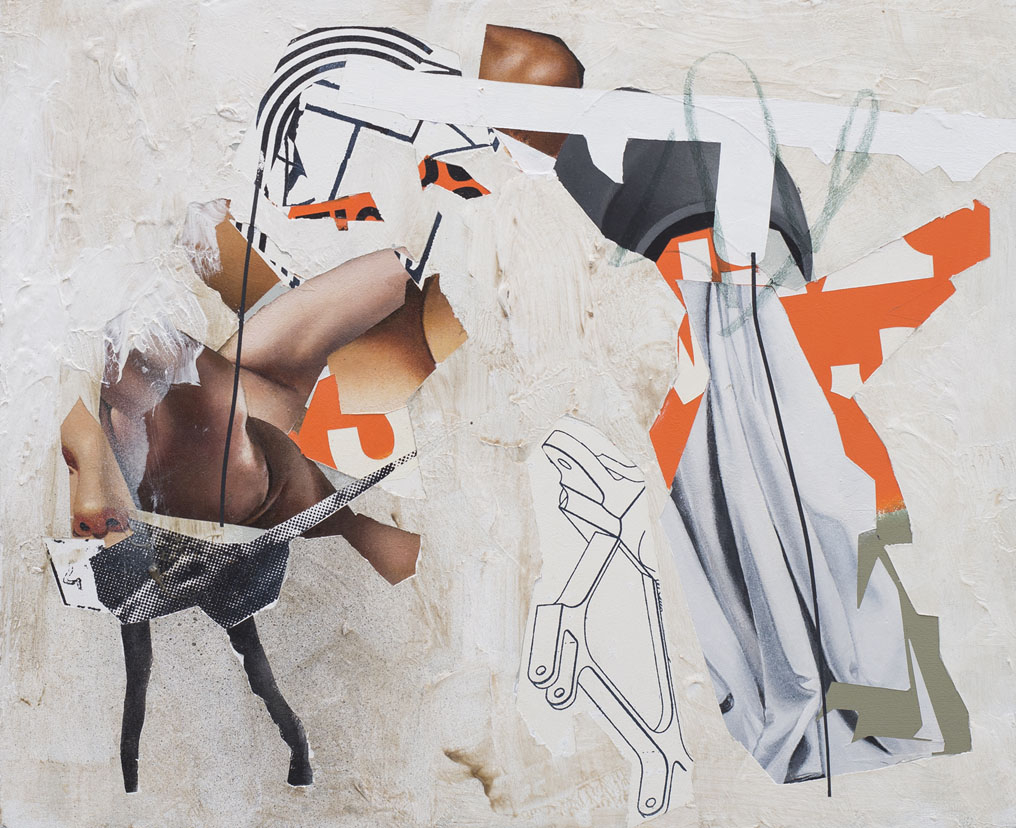Art Happens in Overlaps and In-between Zones | Q&A with Asha Zero
Asha Zero, zzmhodd, 2018. Acrylic on board.
While he works, Asha Zero listens to podcasts on an impressive variety of topics: music, engineering, psychology, and speculative technology – to name a few. “I'm continuously making notes while I'm working,” he says. It’s these assorted curiosities, interests and influences – seemingly unrelated to art – that bump and tangle in his imagination to ignite new ideas for artworks.
On first impression, Asha’s work looks like paper collage, intricate and interesting even before you realise the illusion. The torn and layered strips of imagery are in fact meticulously rendered trompe l’oeil paintings. It’s only recently that he’s started to present the initial paper collages as the finished product. Whether paper, or paint, the various fragments clash and complement in energetic compositions to make something whole.
Now, adding another layer to the process, one of Asha’s works is available as an NFT in Invictus NFT Lab’s Out of Africa Collection.
We asked him about his process, how his work is interpreted by others and what his first impression was of NFTs.
How did you begin painting ‘collages’ instead of just presenting the work as a cut paper collage? Has this changed over time?
The idea to render paintings that appear to be ‘collaged’ is a concept I started exploring while I was an art student. During this period I produced quite heavily-worked paper-based drawings which incorporated collaged elements. Many of the drawings from that period consisted of several individual artworks collaged together to form a composition. The works were layered and chunky and in an effort to seamlessly incorporate some of the collaged images into the composition I started rendering, copying those collaged details to create a trompe l'oeil ‘collage’ effect. The paintings have become more abstract over time while the compositions became ever more complicated and the work grew in scale. I have only recently decided to present traditional collaged work and I am excited to see how my back to basic experimentation with this fundamental technique will influence my practice.
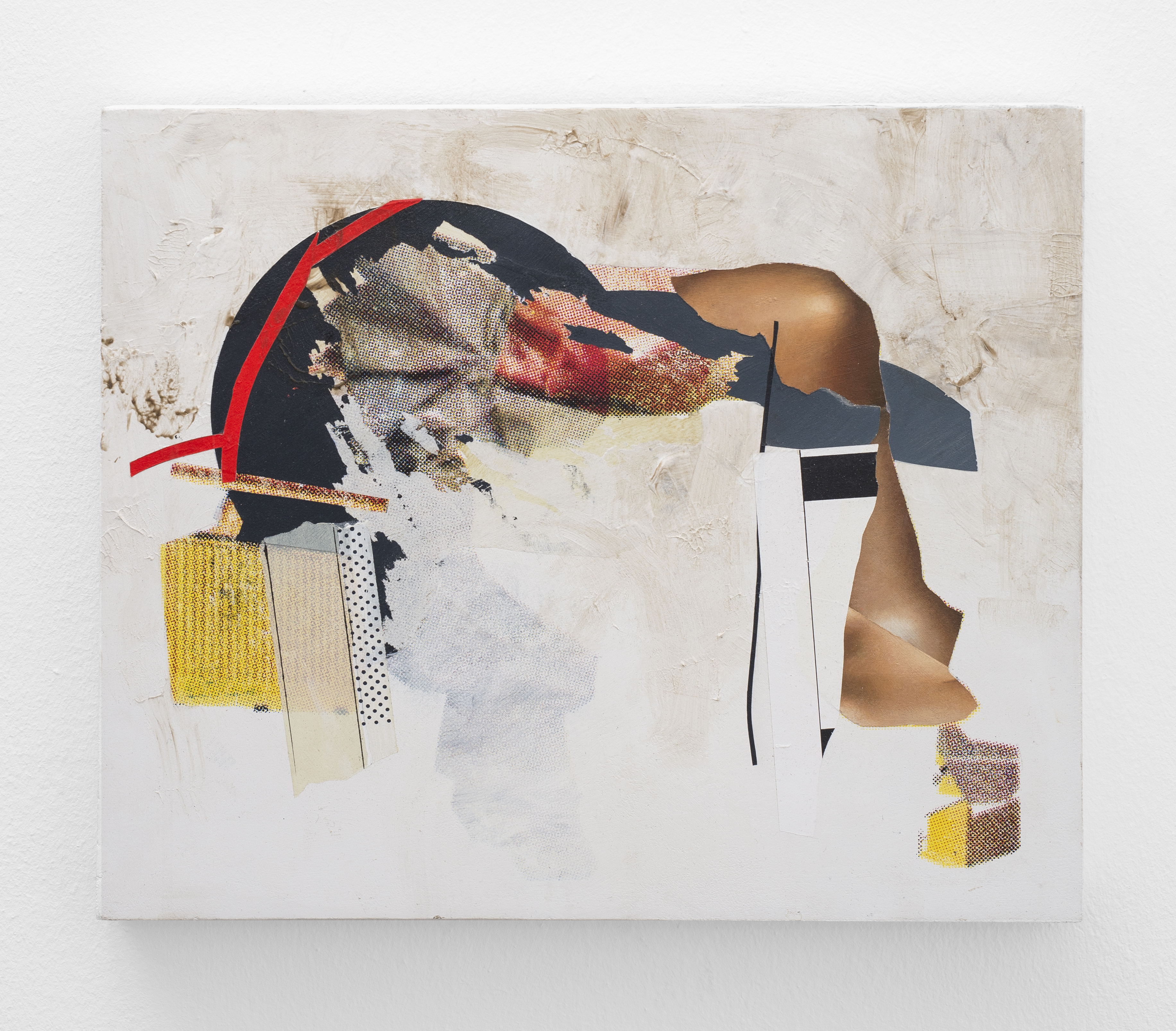
Asha Zero, indice duplicate, 2018. Acrylic on board.
Do you have a method for how you combine or clash images?
I combine images in a number of different ways but I generally try to create a dynamic tension in the way elements of the paintings are juxtaposed by setting up a playful interaction between the planned and unplanned parts of the composition. This is sometimes achieved by allowing accidental processes to influence the composition or details of the overall image and perhaps, in a bit more of an abstract sense, the process of production itself to influence compositional choices. I may for example use the random distribution of off cuts or snippets from a previous piece as a foundational compositional arrangement for a following piece.
There’ve been interpretations of your work as a reflection on digital image culture and consumption. How do you see it?
I would say that it's an interesting interpretation because my work engages with the highly-mediated images of mass culture as a base reference. Digital image culture and technology play a significant role in the production, manipulation, transmission and the presentation of the source images I work from. This may be why the images I create from this type of source material seem to resonate something of the mediated nature or ‘aura’ one finds in some aspects of digital image culture at large. I find the effects of the translation of images between the online and offline realities interesting and even more so when you add the qualities of traditional painting to the mix.
Where do your ideas for new works come from?
My experience is that images and ideas evolve slowly and ideas are fed by a variety of interests and influences that may be perceived as unrelated to art itself. The evolution of these ideas is quite an intuitive process and you need to hone as well as feed your intuition by allowing influences to cross pollinate. I sometimes feel that the ‘art’ mostly happens in those overlaps and in-between zones; patterns that form underneath all the input noise until it starts resonating with your vision.
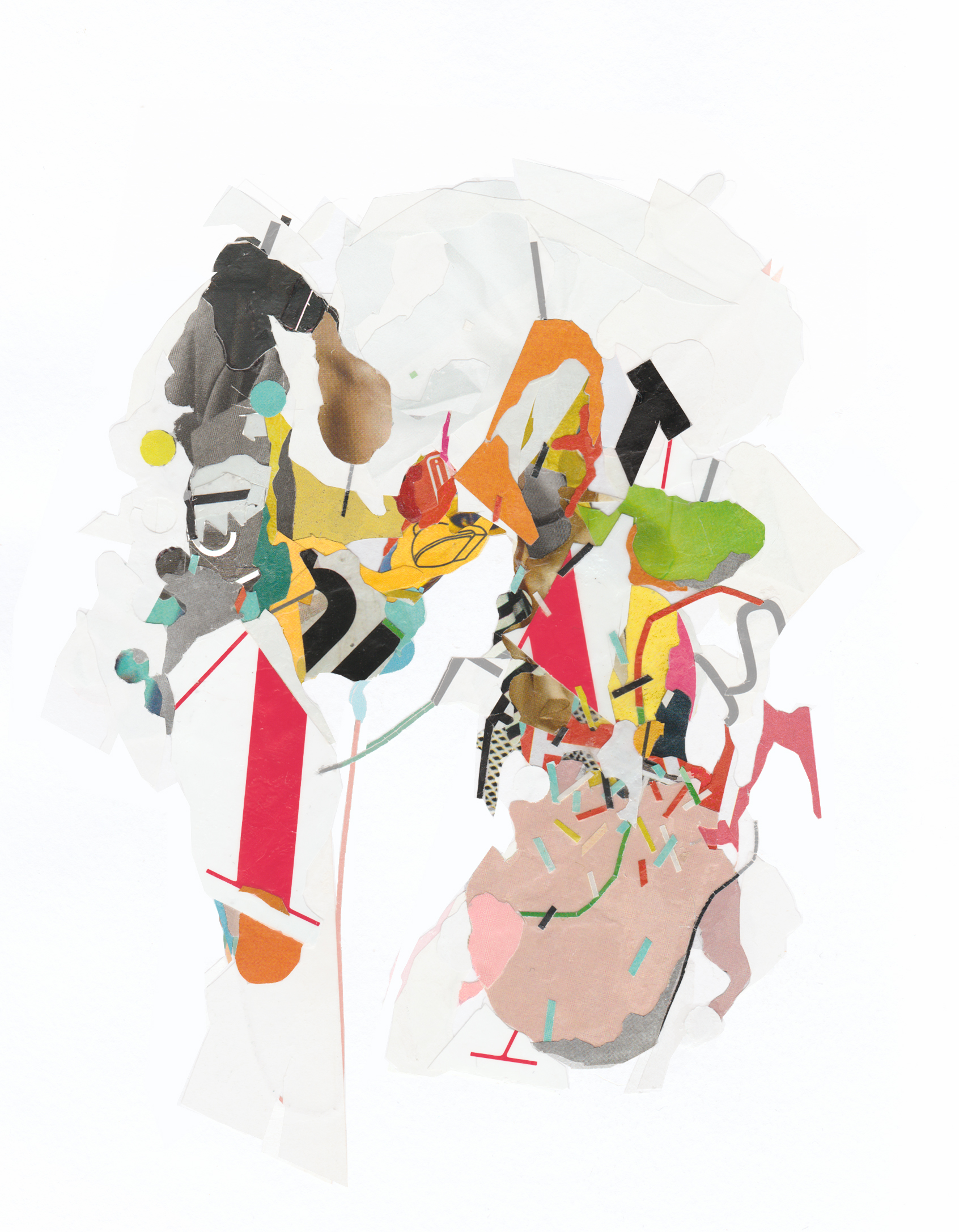
Asha Zero, 8 v s 2 // , 2021. Collage.
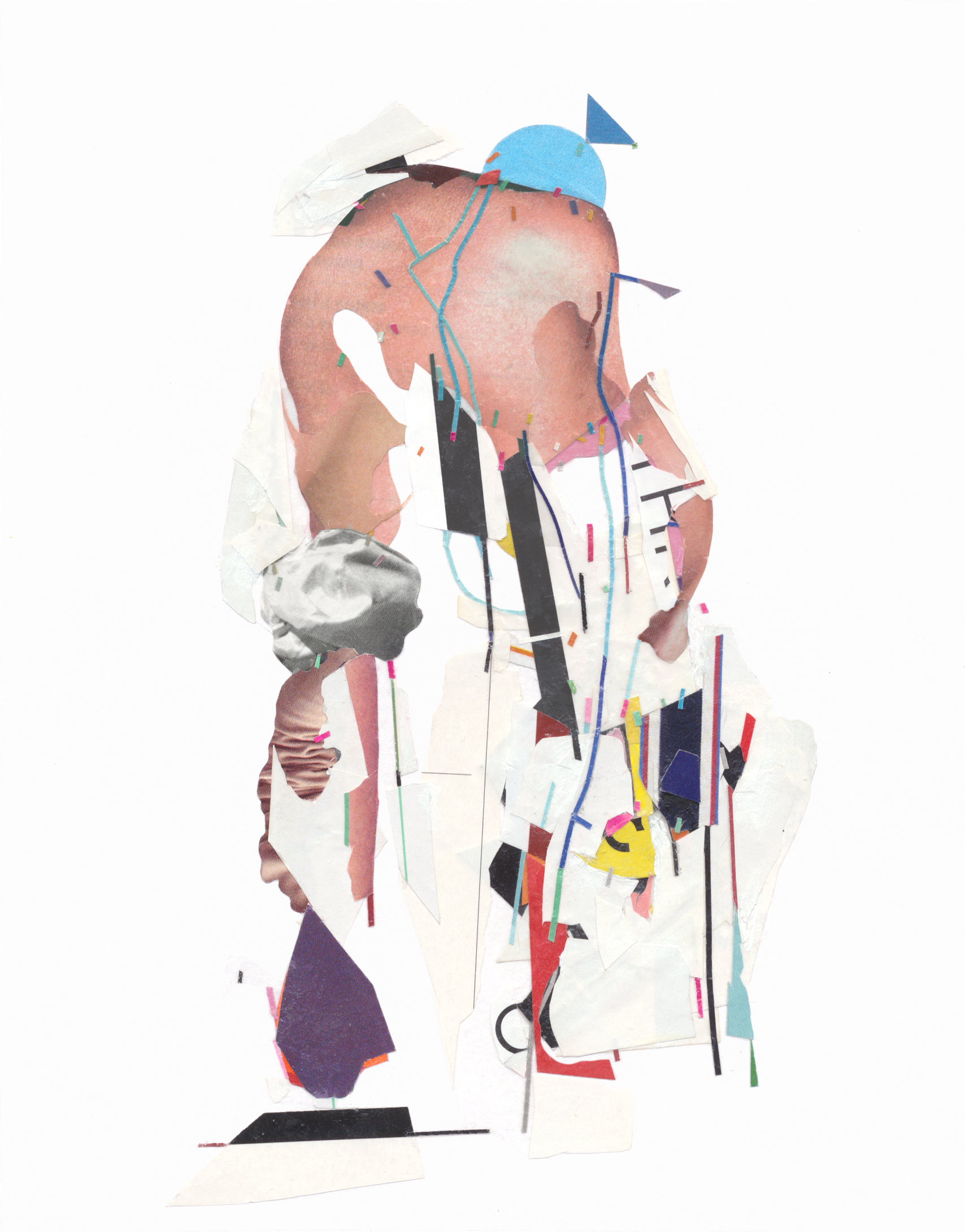
Asha Zero, v x / / u s 71 x, 2021. Collage.
How do you start? With a concept, a feeling, just going straight in etc
In a way, all of the above. I ‘go straight in’ in the sense that I'm working with the momentum of what's currently happening in the studio and because I tend to work on more than one piece at a time, the works all feed into each other. So developments taking place with one piece may, and often do, spark the genesis of a new piece. I'm also constantly tweaking concepts so this also leads to new points of departure and then from there I'll work the image intuitively.
What are some of your techniques for getting paintings to look like paper, especially the torn edges, or ‘printed’ effects?
I work with acrylic paint which is a very versatile medium and well-suited to a number of techniques I employ to achieve the ‘collage’ effect in these paintings. Acrylic paint dries quickly so it enables you to lay down opaque layers of paint and work over those layers within minutes to achieve sharp matte details. The papery look of the paintings is therefore achieved by an inherent quality of the principle medium. I also employ a lot of complicated hand-cut stencil techniques and multilayer masking to achieve the hard edged graphic elements of the compositions. So I apply techniques ranging from hand-rendered trompe l'oeil details to silkscreening in order to manipulate pigment to resemble and translate mass printed material into a painting.
Are there always parts of the human body in your works? Why is it important to include a human element?
Quite a lot of my source material comes from magazines which are extensively photo edited, filtered and altered images. These idealised figures become abstracted and codified representations of the human form that is objectified and loses sentient depth. By including these codified elements in the composition it activates an interesting response since the abstracted human element the viewer perceives in the artwork does not match the organic reality of the body the viewer is subconsciously familiar with. This creates an uncanny tension.
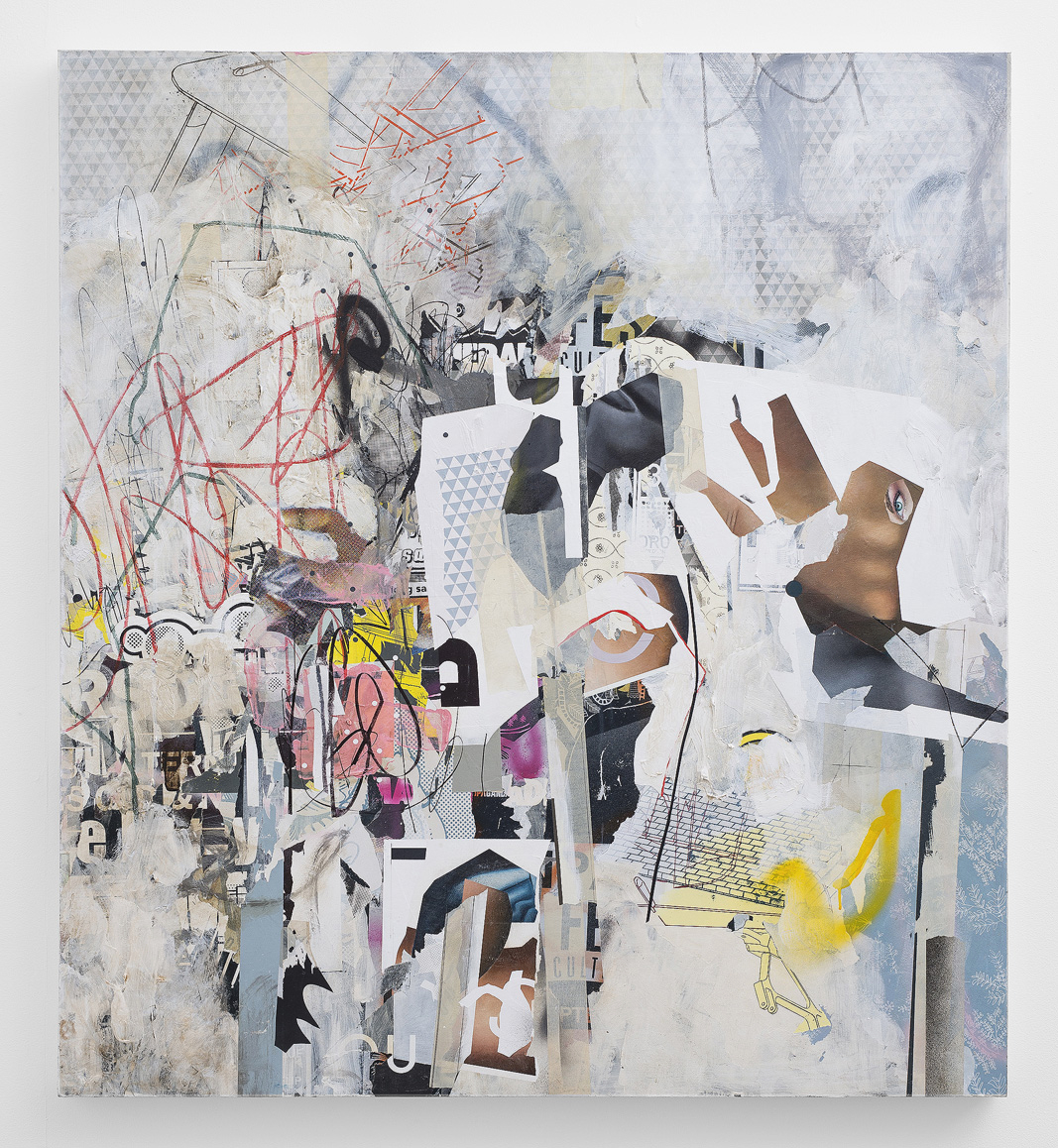
Asha Zero, peep, 2018. Acrylic on board.
Please tell us about the work that's part of the Out of Africa collection, zzmhodd:
zzmhodd was part of a body of work titled set user. The intimately scaled painting is an example of my experimentation with accidental compositions, as well as my transition into more abstract modes of representation. The painting is also part of a conversation with two other works autointrins and bAQV from the set user body of work.
What was your first impression of NFTs?
I was a bit cautious at first and to a certain extent I still am. NFTs have splendid possibilities for artists, but I think careful consideration needs to be taken in understanding the emerging NFT and crypto environment which is currently rife with wild speculation and hype.
As an artist, what interests you about NFTs?
I am interested in the debates and speculative theories that surround NFTs as well as discussions around concepts such as scarcity, authenticity and uniqueness pertaining to ‘digital objects’ and NFTs. There are also fascinating debates about ownership and copyright, the potential of NFTs to bring some sort of transparency into the art world, traceable ownership and how an NFT may become part of the provenance of artworks.
Asha’s work is also part of the current group exhibition ‘Utopia’ online and at 131 A Gallery in Cape Town until the 29th of April.

Asha Zero, nxb, 2016. Acrylic on board.
Further Reading In Articles
African Artist Directory

